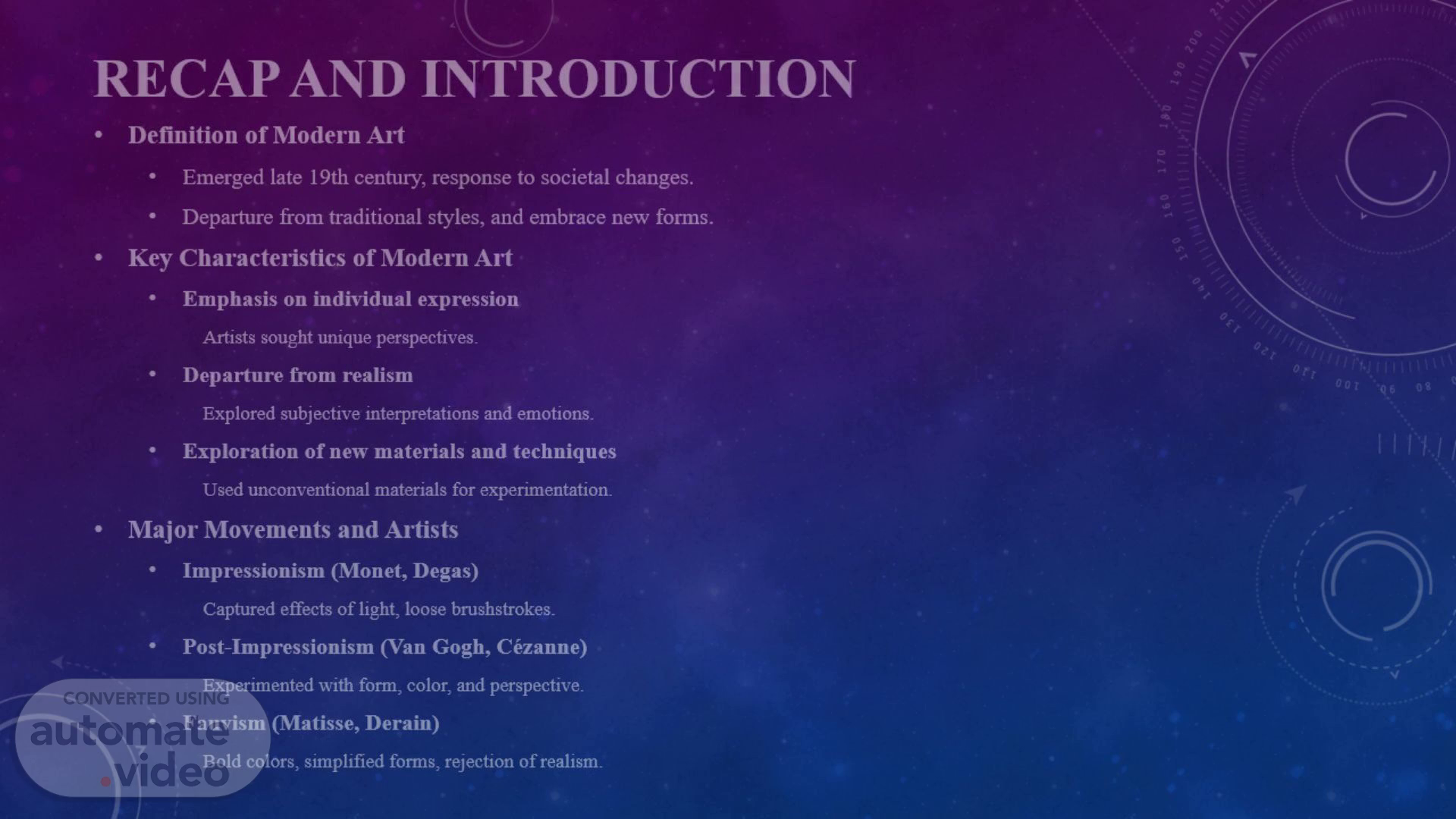
Recap and introduction
Scene 1 (0s)
[Audio] Welcome to our exploration of the Evolution of Modern Art. In the late 19th century, a seismic shift occurred in the art world, giving rise to what we now know as Modern Art. This movement marked a departure from tradition and embraced new forms of expression. As we delve into the key characteristics, we find a profound emphasis on individual expression, a departure from realism in favor of subjective interpretations and emotions, and a bold exploration of new materials and techniques. Our journey begins with major movements like Impressionism, where artists like Monet and Degas captured the effects of light with loose brushstrokes, followed by Post-Impressionism and Fauvism, each pushing the boundaries of artistic expression..
Scene 2 (47s)
[Audio] As we move into the mid-20th century, we encounter the rise of Abstract and Surreal Art. Abstract art, championed by Kandinsky and Malevich, sought to convey emotion and spirituality through non-representational forms. Meanwhile, Cubism, led by Picasso and Braque, shattered traditional perspectives. Surrealism takes us into the dreamlike world of artists like Dalí, Magritte, and Ernst, exploring the subconscious mind and challenging our perceptions of reality. The trauma of World War II then gives birth to Abstract Expressionism, with artists like Pollock using gestural ion as a form of emotional expression..
Scene 3 (1m 31s)
[Audio] As we fast forward to the late 20th century, we witness the emergence of Pop Art—a reaction against expressionism. Artists like Andy Warhol and Roy Lichtenstein blur the lines between high and popular culture, incorporating everyday objects and imagery into their works. The era of Postmodernism embraces diversity, rejecting grand narratives. Artists such as Jeff Koons challenge the notion of 'high art,' while Cindy Sherman explores identity and representation through photography. The digital age introduces new possibilities, with artists like Yayoi Kusama incorporating technology into immersive installations..
Scene 4 (2m 15s)
[Audio] As we conclude our journey through the Evolution of Modern Art, we recognize its enduring legacy. Modern art's ongoing experimentation and diversity reflect the dynamic nature of contemporary society. Globalization has led to the fusion of diverse cultural influences, shaping a rich tapestry of artistic expression. Technology, from digital art to virtual reality, continues to redefine the boundaries of creativity. Let us embrace the encouragement of exploration and interpretation that modern art provides. It is a platform for dialogue, a mirror to our complex world, and a constant source of inspiration for creativity and understanding..